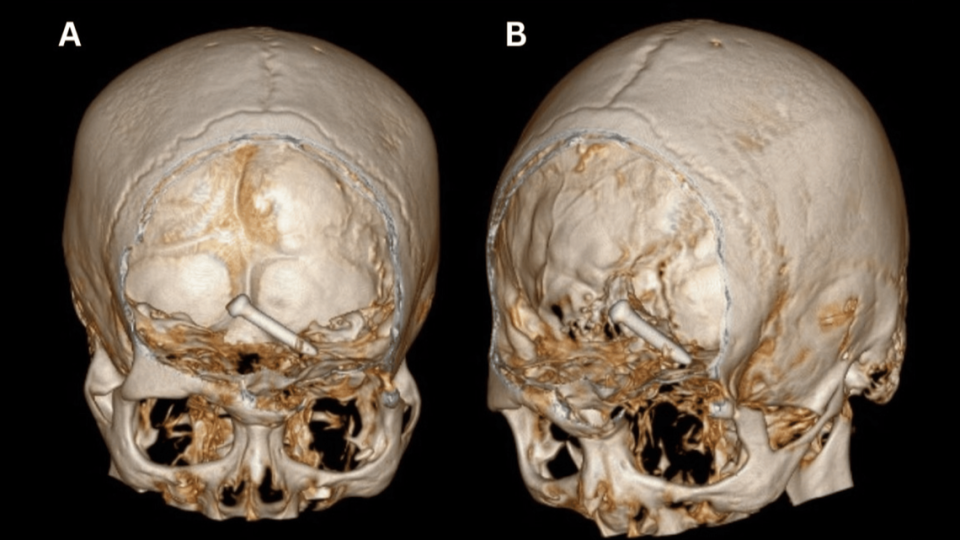Nail gun malfunctions on job site, shooting worker in brain, doctors say. He lived
A construction worker in Malaysia is lucky to be alive after a workplace accident lodged a nail in his brain.
The worker, a 30-year-old man, was at a construction site when one of the pneumatic nail guns started malfunctioning, according to a case report published on Jan. 9 in the journal Cureus.
The gun jammed, and the worker, who doctors say was not wearing safety goggles, looked down the barrel of the nail gun, according to the case report.
The gun was accidentally fired, sending a nail shooting forward and into the worker’s left eye, doctors said.
He was rushed to an emergency room where doctors took a closer look at his injury.
Doctors said his vitals were stable, he was fully awake as he gave a medical history and had full control of his arms and legs, according to the case report.
The only thing that stood out was a growing headache, doctors said.
After completing an eye exam that showed some of his vision had been blurred, the worker was taken for an X-ray to find where the nail had settled, according to the report.
It wasn’t in his eye.
A rare brain injury
The nail had gone through the worker’s eye, through the bone of the eye socket and come to a halt in the “parenchyma of bilateral frontal lobes of the brain,” the doctors said.
That meant the nail was sitting in brain tissue just behind the center of the forehead.

The injury is called a transorbital penetrating brain injury and occurs when a foreign object enters the brain through trauma and moves from one part of the brain to another, according to the report.
Head injuries that involve a brain penetration are rare on their own, only accounting for 0.4% of all head injuries, doctors said.
But when you add the object moving within the brain, it becomes even more rare, according to the report.
Only 24% of penetrating head injuries are TOPIs in adults and only 45% in children, the doctors said.
The brain normally sustains a significant amount of damage when something enters the tissue, resulting in serious neurological or vision damage, according to the report.
How was this worker not only alive, but walking and talking in the emergency room?
Threading a needle
It came down to the location of the nail.
“The left orbital roof was fragmented with bony pieces that pierced through the dura and brain parenchyma,” the doctors wrote in the report. “However, the left internal carotid artery, anterior cerebral arteries, and the olfactory nerves were not injured.”
The nail had threaded a needle between every important structure in the front of the brain, missing a main blood flow to the brain and the nerves that control his eyes.
If just one of those vital structures had been touched, let alone severed, he may not have survived.
To his luck, the nail was safely removed with surgery, and the fractures in the front of his skull were treated, according to the report.
The worker did have some loss of vision in his left eye, but the eye was saved.
“The patient was counseled regarding monocular precautions and was advised to wear protective goggles to prevent any inadvertent trauma to the healthy eye,” the doctors said.
The worker did not come back to the hospital for further treatment, according to the report.
“This case highlights the importance of wearing proper personal protective equipment at work,” the doctors wrote. “Adequate personal protective equipment should be provided by the employers, as well as proper training and demonstration on safe handling of the tools for the workers in order to prevent work-related injuries.”
Woman with stomach pains learns she’s 23 weeks pregnant — in her abdomen, doctors say
Woman shot in the buttock when MRI machine triggers her concealed gun, FDA reports
Man pinches nose to stop sneeze and rips his windpipe open. It’s a first, doctors say
Tuberculosis outbreak came from infected bone grafts, CDC says. It’s not the 1st time

